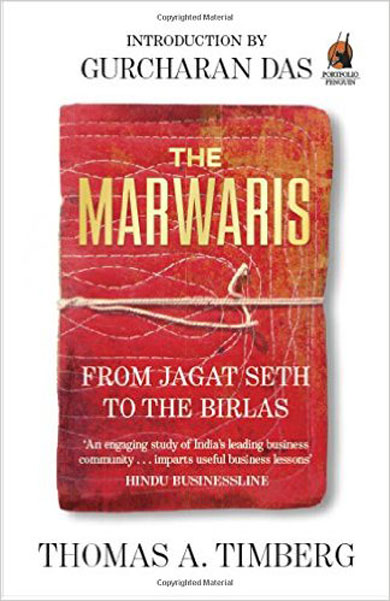About 41 years ago, on a flight from Bombay to Delhi, I found myself sitting next to a well-known and highly successful industrialist, who was also a Marwari. I was surprised that he was travelling economy and, to relieve the tedium of the flight, I asked him how come.

He looked at me, found a callow youth who seemed unaware of his impertinence, and replied with a smile that success in business was dependent on a very old question that every business men should ask at the end of every day: Aaj kinno aayo, kinno gayo (How much was earned today, and how much spent). Every day, he said, the difference between the two should be the maximum.
This smart little book is about the Marwaris. An earlier version has been updated recently by the author who is an American scholar with an intimate knowledge of the subject. He says the Marwaris, contrary to popular belief, are not from the Marwar region of Rajasthan which lies in the Jodhpur, Jaisalmer, Bikaner belt. Instead, they are from the Shekhawati region which lies in an area closer to Jaipur.
He quotes K K Birla who wrote, although in a different context, that finance was in their (Marwaris) blood, just as chivalry is in the blood of some other communities. Until the 19th century they operated mostly in what is now Rajasthan but from then on they expanded to eastern and central India where they successfully edged out the Bengali and Punjabi businessmen. The dominant, negative perception of the Marwaris perhaps comes from this. Importantly, says the author, they also played a role in the revival of Hinduism and the Hindi language in these areas.
The Marwaris proved to be very good at managing the two things that hold the key to success: risk and the prevailing environment. Much of the art of management of risk depends on information and to get this, they had to ‘manage’ the environment in a positive way.
Not everyone succeeded of course. No one actually failed but the vast majority met with very limited success. But the ones that did do well did so in a spectacular way. The question that Timberg asks is whether they will continue to do as well in the 21st century. No one knows, because, firstly, since the reforms of 1991 which changed the environment, many of the old Marwari firms have all but vanished and, secondly, the builders have given way to successors whose calibre is yet to be tested.
That, in more than one sense, sums up the challenge for Marwari big business in India. The scale on which the world’s most successful companies produce and sell has gone up 100 times. The old intuitive methods are no longer adequate. The Marwaris must change their ways but in this context a quote by the late Aditya Birla in this book is worth reproducing:
“I have nothing against MBAs. They are brilliant boys, extremely bright and enterprising … but the training given is better suited to multinationals. Business institutes unfortunately have a bias for sales and also their whole culture is westernised so they do not really fit in with Indian culture.”
Most people today may not agree with this assessment. But the important point is do the Marwaris agree?





